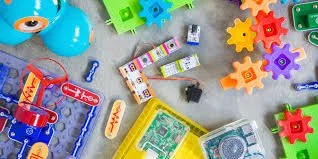Early Intervention in Speech Therapy-
The lasting impact that comes from it and ways to approach it.
POV: Your baby mutters out a few sounds and you convince yourself-and everyone around you- that he totally said “mama”… just me? I’d bet not.
According to ASHA, research shows that introducing Augmentative and Alternative communication methods and technology as early as 12 months can make a drastic impact on a child’s speech skills and development.
Further, it’s said that up to 90% of children receiving early intervention develop functional communication skills, whether verbal or through alternative communication methods like AAC.
So, what is “early”? Typically, when talking about early intervention speech therapy, children from the ages of 12 months to 3 years are who is being considered.
The general idea? Playing, parental influence, and AAC technology and methods.
Parental involvement is key to your child's success.
Individuals with Disabilities Education Act Part C, or IDEA
IDEA was implemented in 2004 and requires that appropriate early-intervention services are available to all eligible infants and toddlers with disabilities and their families. Read more about IDEA and resources available here.
U.S. Department of Education’s Individuals with Disabilities Education Act (IDEA)
Studies have shown that a large amount of providers aren’t using AAC in their early intervention approaches to speech therapy. Consider this study by Lauren M. Dugan and her team in 2006. Even though it’s federally mandated , many are not receiving this type of intervention. At As We Speak, we use this strategy in our early intervention cases, but also in general therapy for many disabilities or struggles. We are hands-on and involved in making sure children with complex communication needs get to learn, play and talk to their maximum potential.
What is AAC Therapy and how does it help?
AAC therapy involves tools that help infants and toddlers communicate their wants and needs, ideas, thoughts, and feelings to their family members. It can be unaided (body language, gestures, facial expressions) or aided (objects, photos, books). Typically, Speech Language Pathologists think it’s best to use multiple modalities and see which ones “stick” best. Remember, it’s all about meeting the child where they are.
Toys and play!
Using multiple modalities can make learning interesting and fun!
Unaided therapy:
Using aided and unaided tools creates variety and keeps it interesting!
The parents and their commitment matter.
It’s important for parents to understand the various ways of using AAC modalities and their impact. Parents can use options like: talking, gesturing/pointing to photos on an AAC device while interacting in fun ways with their child. Of course, when siblings or the rest of the “village” is on the same page, all the better.
Exemplary Practices for Beginning Communicators
Available on Amazon!
“Exemplary Practices for Beginning Communicators” co-edited by Janice Light explains a few key topics to consider for early intervention and the benefits that come along with it:
“Early communication goals include:
Developing social closeness (engagement in social interactions and routines, playing, making friends).
Obtaining information from and providing information to others- comments, sharing, giving full attention, and empathy.
Fulfilling social etiquette with greetings, taking turns, and being courteous.”
Sharing is a skill that takes
effort to learn!
AAC is one popular way of early intervention, but of course the general premise of watching and educating your child early is key. Trust your gut when it comes to your child’s behavior and seek assistance if you’re unsure.
Of course, we are eager to help you through this process and have valuable insight and skills when it comes to implementing AAC and other early intervention methodologies in therapy. It’s important to have an open mind and explore all of the ways that could help your child grow and maximize their potential.
Check out our socials this week for tips, topics, and other ways to implement early intervention tactics to begin the journey of speech therapy with your child. It’s important to incorporate their interests and to make it fun-capture their attention and foster this new relationship!
-PS. He totally said “mama”.






